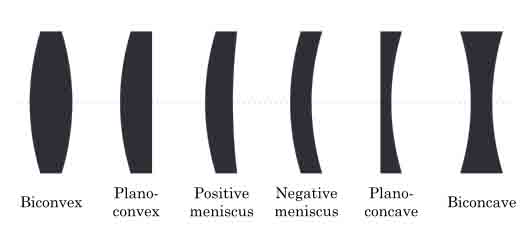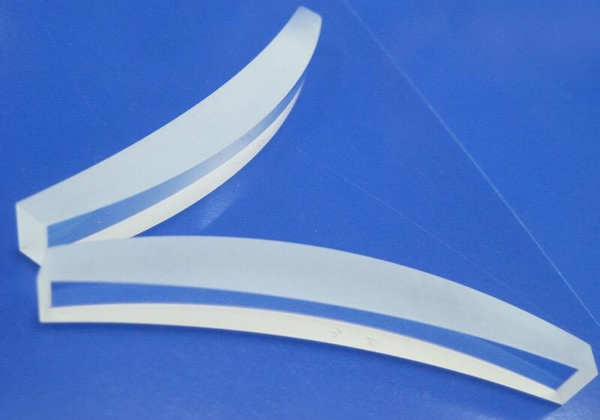Optical Lenses are optical components designed to focus or diverge light. Optical Lenses, which may consist of a single or multiple elements, are used in a wide variety of applications from microscopy to laser processing. Many industries utilize Optical Lenses, including life sciences, imaging, industrial, or defense. As light passes through a lens, it is affected by the lens’ profile or substrate. A Plano-Convex (PCX) or Double-Convex (DCX) lens causes light to focus to a point, while a Plano-Concave (PCV) or Double-Concave (DCV) lens causes the light traveling through the lens to diverge.
Shapes and Types
Lenses come in a variety of shapes including biconvex, biconcave, plano-convex, plano-concave, positive meniscus and negative meniscus.


Plano-Convex Spherical Lenses
Plano-Convex Lenses are Optical Lenses with a positive focal length. Plano-Convex Lenses are ideal for light collimation or for focusing applications utilizing monochromatic illumination, in a range of industries including industrial, pharmaceutical, robotics, or defense. PCX Lenses have one convex surface. For maximum efficiency, the second, plano (flat) surface should face the desired focal plane. Plano-Convex lenses are commonly used in a wide range of applications or industries.

Biconvex Lenses
Biconvex lenses are a simple lens comprising two convex spherical surfaces, generally with the same radius of curvature. Ootee Optical supplies a wide range of stock and bespoke biconvex lenses, available coated or uncoated.
Being a simple lens, biconvex lenses have a broad range of applications including, but not limited to, focussing and control of laser beams, moderate quality imaging and other optical instruments.

Plano-Concave Lenses
Concave lenses, are a simple lens with one spherical face and one flat plano face. Because the spherical face is concave the lens has a negative focal length, allowing the part to increase the divergence of convergent light. Concave lenses can be used to balance out the spherical aberrations caused by other lenses. This makes concave lenses very useful for controlling laser beams.

Bi-Concave Lenses
Bi-concave lenses have two inward curved surfaces. These lenses have a negative focal length. Our catalog bi-concave lenses have an identical curvature on both sides of the lens and are therefore symmetric. At unit conjugation, coma and distortion are cancelled out due to the symmetry. They are used to diverge incoming light or increase the focal length of an existing optical system.

Achromatic doublet lenses
A single lens used to form an image will always show some chromatic aberration, that is variation of focal length with wavelength. Achromatic doublet lenses correct for this as they are constructed from two different glass types and designed to remove first order chromatic aberration. Generally spherical aberration is reduced at the same time. Achromatic doublets are probably the most economical way of achieving quality white light illumination and imaging.

Meniscus Lenses
Meniscus lens is a lens which has two spherical curved surfaces, convex on one side and concave on the other side. It is thicker at the center than at the edges. The lens provides a smaller beam diameter in order to reduce the beam waste and spherical aberration. When a meniscus lens is combined with another lens, the focal length is shortened and the numerical aperture of the system is increased. This reduces the image distortion and increases image resolution.